INTRODUCTION
Anorexia nervosa is a type of psychological eating disorder. Anorexia is a condition that goes beyond out-of-control dieting. Ironically, as concern grows over the rise in obesity rates, some people battle the opposite problem anorexia nervosa. People with anorexia are obsessed with food and their weight and body shape. They attempt to maintain a weight that's far below normal for their age and height.
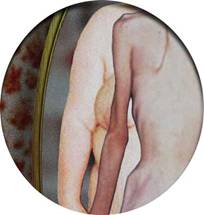
BALDNESS AND ANOREXIA
Eating disorders are triggered by a complexity of factors including social, biological, psychological and behavioral items. Yoga can be a great tool and should be utilized in treating eating disorders. That doesn't mean we stop getting help from the professional medical world. But what we can do is to have the best of both worlds; the medical field of brilliant minds and the intuitive and spiritual world to help us calm our mind and lift our spirit. A calm and focused mind has a better chance of reducing the harmful effects of eating disorders.
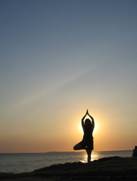
YOGA POSES FOR ANOREXIA
Crab Pose
Crab posture opens the chest and tones the low back to stimulate the respiratory and endocrine systems. Crab pose also builds arm, leg and core body strength. The Crab Pose is a beginner's back bend. Back bends strengthen the back and chest and improve spinal flexibility. They are practiced toward the end of a yoga class or home practice, between seated forward bends and inversions.
Pigeon Pose
Yoga pigeon pose provides a deep stretch for the buttocks and outer thigh muscle. There are several variations such as forward bending, reclining and seated pigeon. A yoga pose that will stretch your hips and thighs and back.
Locust Pose
The locust pose, or Salabhasana in Sanskrit, is an energizing pose that strengthens the abdominal muscles. Locust yoga pose will build strength in the lower back and lengthen the spine. The locust Pose is often recommended as a precursor to poses that are very demanding in terms of flexibility. This is because the Locust Pose is one of the best postures to strengthen the back.
Mountain Pose
The Mountain Pose is also extremely useful because it is also ideal as preparatory or resting yoga pose. The Mountain Pose also offers benefits in terms of physical fitness, as it strengthens the thighs, knees, and ankles. It also tones the muscles around the abdomen and buttocks.
Goddess Pose
Relaxing in Goddess Pose is a really great way to come into your centered breathing and be able to feel the expansion of the rib cage. Restorative Poses, like Goddess Pose are a boon to your practice when you are not feeling your best or just want do some passive stretching. These poses make use of props to support the body and allow it to open in new ways.
Squat Pose
This pose is very useful for easing the tension from the lower back. Practicing this pose regularly, improves balance, coordination and concentration. This pose is a transition from seated to standing poses. Since squat pose opens groin and hips, it is a very good prenatal exercise.
YOGA ASANAS FOR ANOREXIA
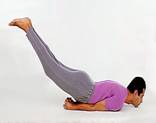
SALABHASANA
Shalabhasana is useful for stomach. Lumber, waist portions and to the legs. Practice of this asana removes constipation. The waist remains trim if you practice Shalabhasana regularly.Salabha Asana is a reverse posture to the Bhujanga Asana (Cobra Posture), which gives a backward bend to the spine and is said to be very effective for insomnia. It is recommended to practice the Salabha Asana after releasing the Bhujanga Asana.
Steps
• First rest in Makarasana. Then keep the hands below thighs and raise up both the legs together.
• The legs should be as straight as possible.
• Inhale and remain in this posture for a few seconds and then relax.
• Repeat this three to six times initially. After gaining sufficient experience you can remain in Shalabhasana for a longer duration, at a stretch.
• For easy practice start with each leg separately for six times. Then you can try raising both the legs.
SARVANGASAN
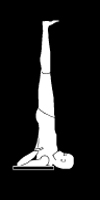
This asana is very good for the thyroid gland. This asana improves the reproductive organs in both men and women. It also helps in relieving bronchitis, dyspepsia, and varicose veins and increases digestive capacity. It stimulates the thyroid and para-thyroid glands and influences the brain, heart and lungs, and improves blood circulation. However, those suffering from high blood pressure should not practice this posture. The sarvanga-asana should not be performed by woman who are menstruating, as is the case with all inverted postures (where the legs are raise over the head.
Steps
• Lie on your back with legs and arms straight, feet together and palms on the floor beside your body. While exhaling, raise your legs slowly upto 90 and then the whole body and the rest your weight on the arms so that the chin touches the jugular notch.
• Bring the arms and hands to support your body at the hip region (fingers at the back and thumb in front of the body). The entire weight of your body rests on the head, neck and shoulders while the arms are used for balancing.
• Keep the trunk, legs and hips in a straight line and as vertical as possible Focus your eyes on your toes, with your chin pressed against the chest. Retain the posture for one for three minutes.
• While exhaling, return to the lying position by bringing the leg backward and releasing the hands and the palms.
MATSYASANA
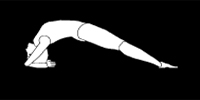
This asana is very useful for persons suffering from chronic cough, bronchial asthma, congestion, infected tonsils and other respiratory disorders. Problems relating to thyroid and para-thyroid glands can also be overcome be done to derive the full of Sarvangasana.it is recommended that you breath while holding it for between two and four minutes.
Steps
• Sit with your legs fully stretched out. Bend each leg at the knees and place your feet on the other hip joint. Both the heels are adjusted in such a way that each presses the adjacent portion of the abdomen. This forms the foot-lock in a sitting position.
• Bend backwards and, exhaling, rest your weight on the elbows. Push your neck backwards and slightly rise the hip upward thus making an arch of the spine.
• Then, by making hooks of the forefingers, hold your toes on the corresponding side without crossing your arms.This posture should be maintained for some time with slow and deep breathing.
• For reverting to the original position, release the foot-lock and return to the supine position by lowering the arch.
DHANURASANA
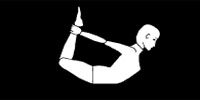
This asana strengthens the abdomen, especially around the navel, and the chest muscles. It improves the flexibility of the arms, shoulders, thighs, legs, lower back and abdomen. The spine also becomes healthy and strong. It is good for relieving flatulence, constipation and menstrual irregularities. It also prevents sterility.
Steps
• Take prone lying position, legs together, hands straight by the side of the thighs, chin resting on the ground. Fold the legs at the knees and bring them on the thighs. Knees must remain together.
• Bring your hands backward and hold the toes of respective legs from the thumb and forefinger of the respective hands.
• Raise your legs a little up and simultaneously raise your head and chest.
• Holding the toes pull the legs towards ears and bring the toes near the ear. Gaze in front.
• While returning to this original position, loosen your hands, take legs backward, let the thighs touch the ground, leave the toes and ultimately bring the legs and hand to the first position
SHIRSHASANA
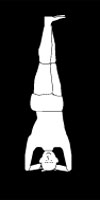
This asana is helpful in cases of dyspepsia and constipation. It improves the functions of the reproductive glands and heart muscles and is of great advantage in checking wet dreams.
Steps
• Sit in a kneeling position with the buttocks resting on the heels of the feet.
• Lean forward and place the forearms on the floor in front while keeping the elbows about shoulder distance apart. Interlock the fingers of both hands.
• Place the top of the head flat on the floor with the back of the head pressed against the inside of the interlocked fingers.
• Placing the tips of the toes firmly on the floor while lifting the heels, raise the knees off the floor.
• Hold for the duration of the held inhaled breath. When you can't hold the breath comfortable any longer, slowly exhale and return the back to the floor, slide the legs out straight returning to the shava-asana.
PASCHIMOTTANASANA
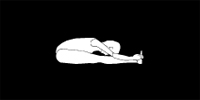
Paschimottanasana is a fine stretching exercise of the body.
In one continuous movement, almost all the posterior muscles get fully stretched and relaxed. This helps to improve the functions of the abdominal organs and sets right respiratory disorders. It also helps to improve memory.Steps
• This posture involves stretching of the posterior muscles of the body.
• While sitting, stretch your legs forward and keep them close to each other. Bend a little forward, make hooks of your fingers and hold the big toes on the respective sides.
• While exhaling, bend forward stretching the trunk along the thighs. Rest your on the knees, which should be kept straight.
• Gradually, the tense muscles can be made supple for securing the complete posture. Inhale and return to the original position.
HALASANA
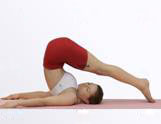
Halasana is a yoga exercise of more or less same variety as sirsasana and sarvangasana. The stretching movement gives an additional benefit in making you flexible and strengthen your spine and back muscles. It is helpful in curbing indigestion, constipation and acid reflux which is very common and very irritating disorders and cant let you to perform your work normally.
Steps
• Lie on your back inhale to your fullest and lift your legs and trunk first to 30 degree, then 60 degree and finally 90 degree just as in sarvangasana, then take your legs back of your head making it 120 degree and beyond, this process should be done while exhalaling.
• Now rest the toes on the ground behind the head and breath normally, you can use hands on the back for support but ideally both in sarvangasana and halasana hands should be on flooe, palms touching the floor.
• When acquiring the posture of halasana the legs should be at 30 degree from the floor.
• Same process is done in reverse order while returning to normal position.
ASTROLOGY
Yoga is the primary level which consists of bodily exercises to build a ground for Meditation. The word yoga had been derived from the Sanskrit word yuj which means to join to unite to balance or to integrate. Yoga is a system of exercises for the mental and physical well being. It combines stylized poses with deep meditation and breathing. According to Patanjali, within the human body there are channels called Nadi and centers called chakra. If these channels & canters are tapped, energy hidden in the body can be released. This energy is called kundalini. In the broadest sense Yoga thus means integration at three levels Body, Mind and soul. According to astrological reports for yoga asanas the above mentioned asanas are said to be effective for those who come under the following zodiac sign.
• TAURUS
• AQUARIUS